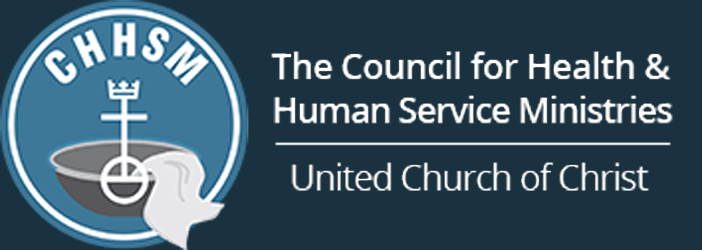Parker Center Symposium Focuses on Impact of Racism on Health and Well Being of Older Adults of Color
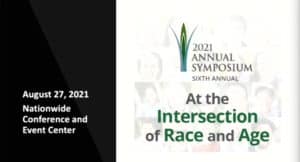
In an intense examination of systemic racism in health care among older adults of color, the Ruth Frost Parker Center for Abundant Aging’s “At the Intersection of Race and Age” symposium Aug. 27 created opportunities for change through greater understanding of the ways in which discrimination and bias affect health outcomes. Held virtually and in person, the sixth annual United Church Homes event featured leading experts in older adult research.
Opening remarks by the Rev. Dr. Kenneth V. Daniel, president and CEO of United Church Homes, set the tone of the gathering, as he cited the “deep roots of racism which undergird every institution in this land.”
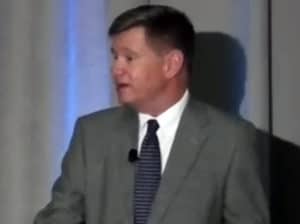
“We come to today’s theme, ‘At the Intersection of Race and Age,’ with the perspective that there are others in our society who continue to experience hatred and discrimination, both as individuals and as collective groups, living in the larger systems which make up our country,” Daniel said. “In the wake of the past 18 months — through both the pandemic of the COVID 19 virus alongside the public awareness of racism — we have all been faced with the opportunity to listen to the experience of others and to reflect on our personal actions and behavior. .. we know that the urgency to find ways to narrow the divide between those who are vaccinated and those who are not is a particularly delicate, complicated and traumatic path when we look at the intersection we come to today: race and age.”
The morning’s featured speakers included Dr. Carl Hill, Ph.D., MPH, chief diversity, equity, and inclusion officer for the Alzheimer’s Association; and Dr. Jamie Mitchell, assistant professor, School of Social Work, University of Michigan. Their presentations followed a brief introduction by Larke Recchie, Chair of the Parker Center Advisory Committee, and the Rev. Geoffrey Black, UCH board member and former general minister and president of the UCC. Recchie and Black discussed UCH’s diversity, equity and inclusion initiatives.
After giving an historical overview of Alzheimer’s research, Hill delved into the gender, racial, and ethnic disparities in Alzheimer’s diagnosis and treatment. Almost two-thirds of Americans with Alzheimer’s are women, Hill said. Research also has found that older Black and Latinx Americans are more likely than older white Americans to have Alzheimer’s or other dementia-related diseases.
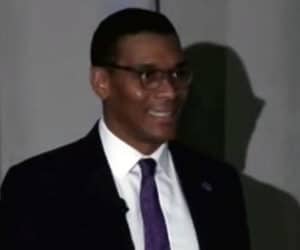
But according to the latest research, said Hill, one of the largest factors influencing health equity disparities is that persons of color feel ignored or not heard by health professionals. This causes a lower likelihood of older adult persons of color to seek medical care.
A 2021 report on race, ethnicity and Alzheimer’s in the United States — the first to collect data on diverse communities — found that more than a third of Black Americans and nearly one-fifth of Latinx and Asian Americans believe that discrimination is a barrier to receiving Alzheimer’s care. “If you perceive you will be treated differently, you are less likely to seek care,” Hill said.
Hill’s final point discussed the need for greater inclusion in dementia research, prompting Dr. Jamie Mitchell, the second speaker, to comment that much of “social science research is ‘mesearch.’ Researchers of color are less likely to get funding because their topic areas aren’t getting funded by institutions,” she said. “They’re not being recognized by the importance of the work they’re doing in the communities where they grew up.”
Mitchell’s talk centered on communication as key in advocating for equity and inclusion in health care and community research engagement. Finding ways to build equitable connections between older African Americans and health researchers is a necessary step, she said, in increasing inclusion and diversity in research — and therefore health outcomes — of older adults of color.
There is a “smog of racism” that engulfs us, and “we breath it in,” said Mitchell. “Race and ethnicity plays a large part in the way we have to look at health disparities.”
In her work as part of Healthier Black Elders Center — a program of The Michigan Center for Urban African American Aging Research — Mitchell works to increase the participation of older adults of color in research projects. The most important step, she said — and one that often is difficult to fund — is taking the time to build trust within a community prior to beginning research.
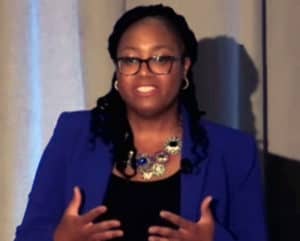
As opposed to many researchers who descend on a community, do research and then leave, Mitchell’s emphasis places the needs of the community as paramount to successful research. “How do we support older adults in engaging with us, in order to use research to improve health outcomes over time?” she asked.
Mitchell enumerated three insights she has gained from her work in community engagement: connecting with local leaders and listening before trying to communicate anything; communicating in jargon-free, transparent ways; and being consistent.
“We need to pair our [research] goals with the community’s needs,” she said. Equally important is being aware of any unconscious racial biases.
“The health care communication experience has been dismal for older adults” of color, said Mitchell. “Doctors tend to dominate conversations with African American patients, pay less attention to their needs, and make them feel less involved in making decisions about their health.”
“Providers want to provide good care, but if you’re not conscious of the systemic and institutional bias/racism, you don’t know that you are not providing care that isn’t as good,” Mitchell said. High quality, person-centered communication leads to a sense of shared understanding and power, shared responsibility within the medical visit interaction, and improved health care outcomes.
“Consistent, high touch efforts show a community that we care for them,” she added.
The afternoon sessions delved into the impact of COVID 19 on Ohio Nursing Homes, led by Dr. Bob Applebaum, professor of Gerontology and director of the Ohio Long-Term Care Research Project for the Scripps Gerontology Center, Miami (Ohio) University; and examined two Central Ohio programs — a Community Refugee and Immigration Services (CRIS) of Central Ohio’s older Refugee and Immigrant program, and an Ohio State University (OSU) intergenerational program that encourages residents and students to meet and discuss important medical issues. The day ended with a panel discussion of all the presenters on next steps in achieving health equity.
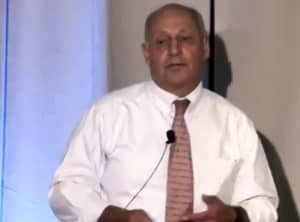
“I can’t emphasize enough how ill-prepared we were when COVID hit,” said Applebaum in discussing the ongoing pandemic-related issues faced by nursing homes. The problems still exist, he said, from lack of equipment to lack of staff. In self-reported data from central Ohio-area nursing homes, “more than 30 percent say they have a staff shortage today,” he added. “If they are telling you they have a shortage, it’s probably a low estimate.”
According to Daniel, another problem is the chronic underfunding of nursing homes by Medicaid, which revealed itself during the pandemic. Not surprisingly, nursing homes often serve the most impoverished individuals and people of color, he said.
Following Applebaum, “A Cultural Approach to the Intersection” examined the CRIS Senior Companion Program and the “Kitchen Table Tales” program of OSU. Led by Dr. Cynthia Dougherty, OSU College of Medicine, and Dr. Andrea Pfeifle, OSU Wexner Medical Center, the session began with Raj Chhetrie telling his immigration story as part of the CRIS program. Miss Julialynne Walker, a participant from the OSU program, also offered insights into accessing medical services.
During the final panel discussion, the five presenters discussed the common themes emerging during the symposium — among them, the need for cultural humility and listening to community members.
“What stood out to me is this constant theme of trust and seeing the humanity in the people we are serving,” said Mitchell. “And what happens when we’re not able to do that engenders mistrust in all aspects” of health care and research.
“The concept of health equity is not new,” said OSU’s Pfeifle, “but we’re looking at it more broadly, and some of us are being more honest of its root causes. … Until we build a community of inclusion and safety, we’re not going to get past this.”
Board member Black raised the idea of framing racism as a public health issue, and whether that perspective is being discussed broadly.
“As health professionals, our challenge is to find a way to translate that message to our neighbors and community partners without the partisan blaming — helping them see the connections between historic and current racism and the ways systems are set up that discriminate,” answered Mitchell. But “our conversations in the silos don’t always translate to the local communities. We have a lot of work to do in that area.”
Hill concurred. We have to find ways to help people understand “the differences in the lived experiences of racism,” he said.
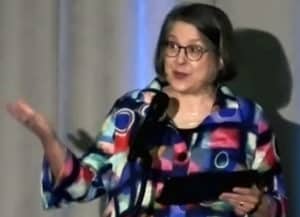
The Rev. Beth Long-Higgins, executive director of the Parker Center, reflected on the symposium. “When we chose the theme/title for this year’s event, we knew that there were a significant number of ways to approach that intersection,” she said. “From Rev. Daniel, Rev. Geoffrey Black and Larke Recchie helping to set the stage of ‘why this intersection at this time’ to the last panel conversation with all of the day’s presenters, I think we helped to introduce some of the components of cultural humility that are needed when we try to advocate and serve older persons of color. There was a good balance between overview, historical contexts, contemporary practice and an acknowledgement of the need for ongoing and future focus at this intersection.”
Black agreed. “To us [at United Church Homes], justice and inclusion are synonymous,” he said. “The symposium was grounded in the present. Our presenters were very informative about the present state of research on race and aging in health care … [but] they were also looking ahead and pointing out the kinds of change needed in order to serve the diverse population of the United States.”
Join Our Mailing LIst
"*" indicates required fields
Follow on Facebook
Rennie Named President and CEO For EHM Senior Solutions - CHHSM
www.chhsm.org
Kari Rennie has been selected as the new president and CEO of EHM Senior Solutions, based in Saline, Mich. With more than 15 years’ experience, Rennie brings a diverse skillset and strong focus on r...